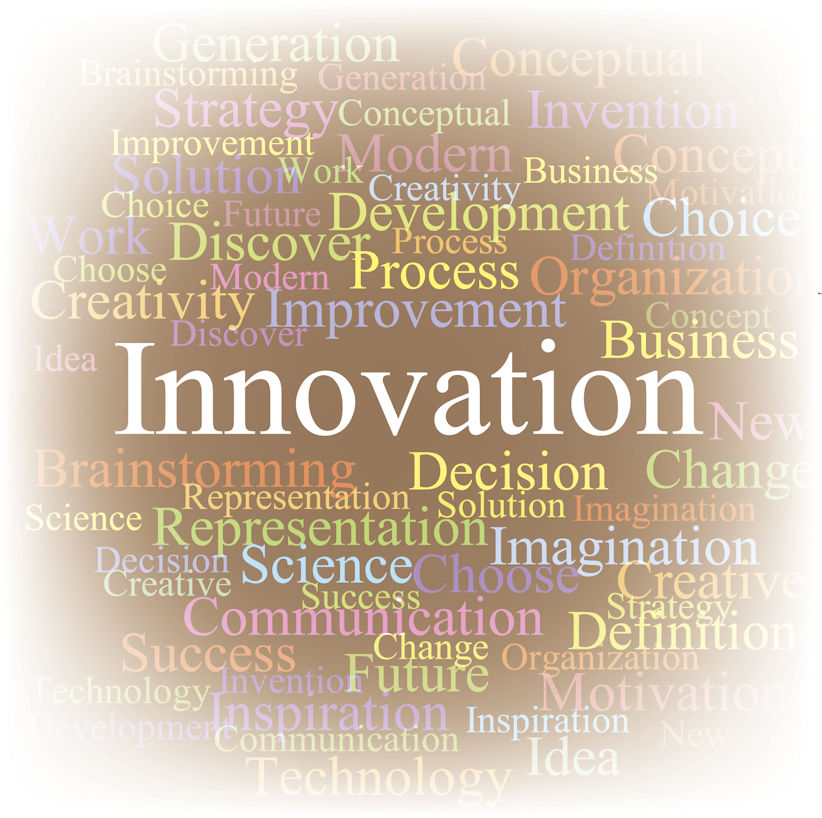Plan for Disruption
We have seen many companies creatively using innovative technology to disrupt their industry. It is astounding to read at the current rate, about half of S&P 500 companies will be replaced over the next ten years! There are many examples of companies using innovation to obtain an unexpected lead in an existing market or even create an entirely new market. Whether it is Uber, Airbnb, Amazon, Houzz, Netflix, Zipcar, Tesla, Instacart, Facebook, Google, or Apple; they have all used technology to shape their competitive advantage and successfully disrupt their industry.
How do you identify a strategy to use technology to differentiate, disrupt and win in the marketplace? How can you think differently to create something not created in the past rather than just identifying incremental improvements?
Disruption can impact why you are delivering, what you are delivering, how it is delivered, and who delivers it. Following are four ways to ensure innovation is part of your culture and planning efforts.
1. WHY? Start with the Customer Rather Than the Product
Industries have evolved from a product-focus in the 1970’s to a product-and-service focus in the 1990’s. In the early 2000’s, businesses became customer-centric. Today, industries are relationship-centric with the total customer experience more important than the specific product itself. The lines between partners in the supply chain are also blurring. Successful companies orchestrate a journey of value to best solve the needs of the end customer. Innovative companies redesign existing value chains to focus on the end customer as the “Why”, eliminating any constraints and unnecessary intermediaries along the way.
Today’s customer is well-versed, armed with information and options. Customers control the buying process and engage vendors later in the sales cycle. The customer is definitely the king/queen in this flexible and dynamic environment. Industry leaders and innovators continue to delight the customer on a consistent basis, as there is no such thing as “owning” the customer as was thought in the past.
In the planning process, start with the voice of the customer as the “Why” to drive innovation and work forward from there. In the past, planning typically started with and focused on the product. Use the voice of the customer and the true customer needs to determine the strategy. Know the customer; their needs, wants, pains, and end desires. Know all potential customers; current customers as well as those not customers. Develop customer personas to really understand each customer’s unique needs and perspectives. Be sure the planning process includes customer visits, focus groups, and surveys. Ensure you have a complete understanding of the customer rather than dealing with incorrect or outdated assumptions.
Although it is critical to map the customer experience journey and identify desires and roadblocks, do not be afraid to totally re-invent the journey and just start with the end customer desire or need. Do not assume that you have the best solution to the root problem. Think differently about the core customer problem. Ask the right questions to be sure you are solving the right problem. For example, Airbnb and Zipcar did not improve one small part of the journey to find a place to stay or car to drive but re-invented the entire journey. Solely focusing on the current customer journey and identifying broken areas is important, but it may lead you down the path of incremental improvements.
Look at any unmet customer needs and continually increasing customer expectations. As Steve Jobs claimed, it is your job to identify what customers need that they do not even know they need. Innovation often comes from identifying the problem customers want to be solved and creating a viable solution never before imagined. To identify predictive customer desires, you need to be intimately familiar with customer habits, problems, patterns, and desires. Consider the entire customer journey, including the ultimate customer satisfaction and service, not just the initial acquisition.
2. WHAT? Assess External and Internal Levers
After you have defined the customer, the end need, and customer journey, you can then validate the plan by examining both external and internal levers for additional opportunities. These levers are ways to significantly impact the current business model, or the “What” being delivered. These questions, or levers, should pry for significant changes rather than incremental improvements. When asking these questions, think out-of-the-box rather than status-quo.
Examples of external levers include questions to significantly increase revenue such as: What can we do to ….
- Enter new markets?
- Reach new geographies?
- Create entirely new products/services or replace existing products/services?
- Get new customers?
- Turn non-customers into customers?
- Address any overlooked or under-served market segments?
- Create a flexible supply chain which shifts as needed to meet customer demands?
- Unbundle services and products to meet customer needs?
- Exploit opportunities and threats?
- Provide the customer with what they want when they want it?
One example of an external lever is determining how to increase consumption and on-demand models. Today, there is a shift to the subscription on-demand economy in virtually all industries where the customer can get and pay for the service when needed rather than all the time (e.g. Zipcar & Amazon Prime for clubs, Netflix for Video on Demand).
Internal levers are ways to significantly change internal business processes. For example: What can we do to …
- Drastically reduce expenses?
- Address weaknesses impacting our market or market share?
- Generate a marked improvement from any others in the industry?
- Capitalize on strengths to provide an unbeatable competitive advantage?
- Significantly improve quality or the speed of processes?
- Utilize process or technology trends to deliver cheaper, better, and faster than anyone else?
3. HOW? Leverage Technology Trends & Capabilities
With rapid changes in technology happening everywhere, there are a plethora of innovations coming into the mainstream which can be used for the “How”. Only after addressing the “Why” and the “What” can the planning process focus on the “How”. Yet, many companies mistakenly begin their planning process by identifying the “How” focusing on projects.
Technology trends can be industry-specific as well as business-function specific. For example, 3-D printing is revolutionizing manufacturing, while Blockchain may be more prevalent in financial and transaction models. With so many technology options and possibilities, how can you stay on top of all the technologies and integrate them into the planning process? You may not feel like you are a technology expert, yet with the lines blurring between business and technology, technology is impacting every business and has quickly become an integral part of any company’s strategy. It may be helpful to integrate an unbiased technology expert in your planning process for an additional insight of opportunities.
The key in the planning process is to focus on the creative use of technology, not the technology itself. You do not have to necessarily invent new technologies but put existing technologies together to creatively solve a problem, much like using Lego-blocks. When looking at products for the future, many are based on core technologies existing today.
As part of the strategic planning process, companies must challenge their traditional business model and determine how to embrace and use technology trends for success. How each company uses and approaches the latest trends are unique depending on the industry, customers, competitors, business situation, and company culture. What can be a home-run in one industry may be at-par in another, or may even create collateral damage in others.
At a minimum, consider these core technologies as part of the planning process as they will continue to impact businesses in all industries:
- Digital Business
- Mobile
- Internet of Things (IoT) Connecting Everything
- Big Data/Data Analytics & Business Intelligence
- Artificial Intelligence
4. WHO? Nurture an Innovative & Agile Culture
Plan the “Who” by organizing the employees and establishing a culture for innovation. Ensure innovation is an ongoing process and is part of the culture, rather than an annual event. Support and fund ongoing innovation. Allocate time and resources to innovation. Ensure the funding model and the budgeting process supports innovation. Spend a greater percentage of the budget each year on adding business value.
Organize employees for collaboration and innovation. Ensure hiring practices and talent management supports new skills and an innovative mindset. Use assessment tools to confirm the company is hiring the right people with a personality profile of innovation. Intentionally integrate external and new-hire resources, opinions, and viewpoints. Be sure to listen to and empower the millennial worker and the younger mindset. As said by Steve Jobs, “It doesn’t make sense to hire smart people and then tell them what to do; we hire smart people so they can tell us what to do.” Innovation is everyone’s job. Ideas can come from everywhere, no matter where the individual is within the organizational structure. Bring the right people together to solve problems and participate in projects for cross-functional collaboration and engagement. Consider ideas and innovation from different processes, industries, functions, and unlikely sources. Support collaboration and communication with automated tools.
Expand knowledge by investing in training. Create new experiences with state-of-the-art projects and rotating assignments for employees. Give employees opportunities to brainstorm and the freedom to explore and develop their ideas. Have innovation labs to encourage and test new ideas. Have fun with innovation and inspire new ideas. For example, one company held an annual Shark Tank event to select the best ideas for funding, creating a positive competition throughout the year.
Encourage an entrepreneurial spirit and innovation by challenging employees to solve problems with creative solutions. When developing the plan, model an attitude of innovation and have an open mind. Throughout the organization and planning process, have a “yes we can” mentality rather than a “no we cannot”. Ask open-ended questions and ask “why not” rather than falling into the rut of the way it has always been done.
Encourage and embrace risk by reducing the fear of failure. Make failure an option and part of the process of innovation. Have a momentum to fail often and fail quickly rather than requiring perfection. Ensure a culture of trust exists in an open communication process. Employees must trust they will not get ridiculed for half-baked ideas and will get support to develop ideas. Focus on the intent rather than initial results to continuously learn and improve.
Begin the Journey to Innovation
Nothing is static. The speed of business and technology innovation is accelerating. The lifespan of companies, ideas, solutions, and strategic plans are all shrinking. Businesses need to innovate quickly or die. Technology initiatives used to take years and are now expected in months, or even less. In the past, it took an average of 20 years for Fortune 500 companies to reach a billion-dollar valuation, while today’s digital start-up companies reach the valuation within four years. Businesses must be planning and adjusting as a continual process and culture of change with concise action plans rather than an annual event with a five-year outlook. The largest risk is doing nothing.
Contact us if you would like help on your journey to innovation!







